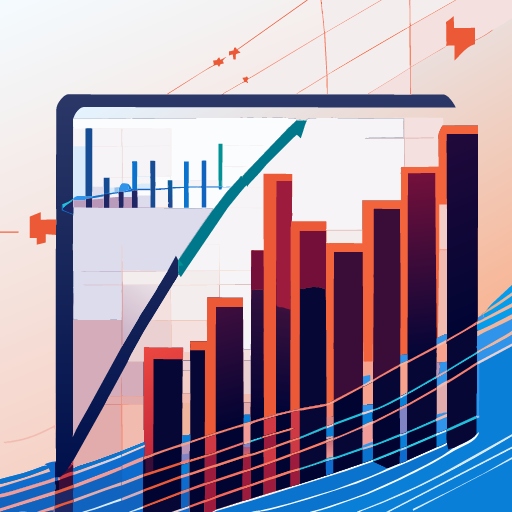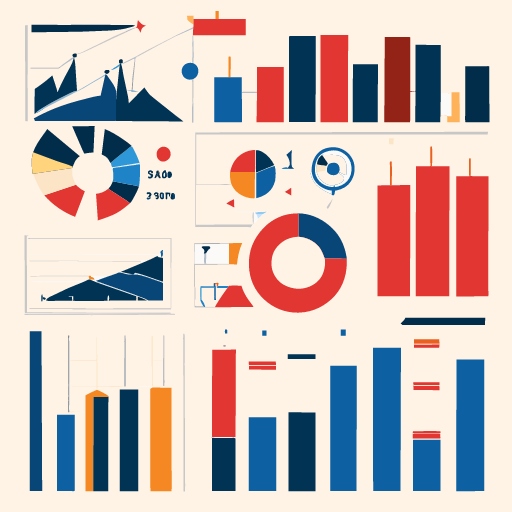The Complete Guide on Quantitative Data

Introduction
In the modern age, when information is gold, understanding Quantitative data plays an instrumental role. This guide offers a thorough analysis into the extensive realm of quantitative data. It throws light on its many facets and the unquestionable significance in today’s world.
Quantitative Data: The Pillar of Modern Decision Making
Quantitative data is essentially numerical data that can be measured or counted. It is a really powerful instrument that helps examine patterns, forecasting trends and making well-informed conclusions.
– What Sets It Apart?: In contrast to qualitative information, which deals with descriptions and attributes, quantitative data focuses on numerical values. The fact that it is measurable makes it a favorite choice for many professionals, from market researchers to scientists.
– The Power of Precision: One major advantage of quantitative data is the precision it offers. This data can be subjected to statistical analysis, thus giving concrete results that can guide strategies and decisions.
Methods of Collecting Quantitative Data
Understanding various methods is crucial for any professional. Here’s an overview:
– Surveys and Questionnaires: Usually conducted via the internet, these activities have the potential to collect extensive data from a diverse range of participants.
– Experiments: Set in controlled environments, experiments are great for determining cause and effect relationships.
– Observations: Systematic observations can record numerical data like frequency or duration of certain behaviours or events.
Data Analysis Techniques
Once you have the data collected the following step involves analysis:
– Statistical Analysis: Individuals have the capacity of calculating various statistical measures such as mean, median and mode, among others, by employing tools like SPSS or R. They can perform statistical tests like chi-square and t-tests.
– Data Visualization: Graphs, charts, and infographics help in better understanding and presenting the data.

Importance in Business
Quantitative data is a game-changer in the business world:
– Market Research: It helps businesses understand market trends, customer preferences, and more.
– Financial Analysis: A lot of financial data including balance sheets and cash flow statements primarily deal with quantitative data.
– Supply Chain Management: Quantitative data aids in optimizing production, logistics, and delivery processes.
Quantitative vs. Qualitative Data
While both are vital, they serve different purposes:
– Nature of Data: Quantitative is numerical; Qualitative is descriptive.
– Analysis: Quantitative uses statistical methods; Qualitative may use thematic analysis.
– Usage: Quantitative is for hypothesis testing; Qualitative is for exploratory studies.
Software Tools for Handling Quantitative Data
The digital age brings several tools:
– Excel: A basic tool for data entry and simple analyses.
– SPSS: Widely used for statistical analyses.
– Tableau: For data visualisation and business intelligence.
Challenges in Handling Quantitative Data
Like all things, there are challenges:
– Volume: Managing large datasets can be daunting.
– Accuracy: Any errors in data can lead to faulty conclusions.
– Complexity: Advanced statistical analyses require expertise.
The Future of Quantitative Data
The landscape of quantitative data is ever-evolving:
– Big Data: With the rise of IoT, the amount of data generated will be monumental.
– AI & ML: Advanced algorithms will play a pivotal role in data analysis.
– Data Ethics: It is of utmost importance to ensure the ethical gathering and utilization of data.

FAQs
- Why is quantitative data crucial?
Quantitative data offers precise, measurable, and objective insights that can guide a myriad of decisions, from business strategies to scientific research.
- Can quantitative data be misleading?
Yes, if the data collected is not accurate or if the analysis is done incorrectly, the results can be misleading.
- Which industries rely heavily on quantitative data?
Almost all industries, including finance, healthcare, marketing, and scientific research, rely on quantitative data.
- What are the main sources of quantitative data?
Surveys, experiments, and observations are among the primary sources.
- How does quantitative data differ from qualitative data?
Quantitative data is numerical and can be measured, while qualitative data is descriptive and deals with characteristics.
- How do I analyse large volumes of quantitative data?
Using statistical software tools like SPSS, R, or Python, coupled with data visualization tools like Tableau, can aid in the analysis.
Conclusion
Quantitative data which is known for its accuracy and impartiality, and plays a fundamental role in the world of making decisions based on data. The ability to grasp and utilize this kind of data is crucial, and as we continue to advance in this age of information, the importance and relevance of Quantitative data will continue to increase.
External Links/ Sources:
What Is Quantitative Data? (With Methods, Benefits and Examples)
